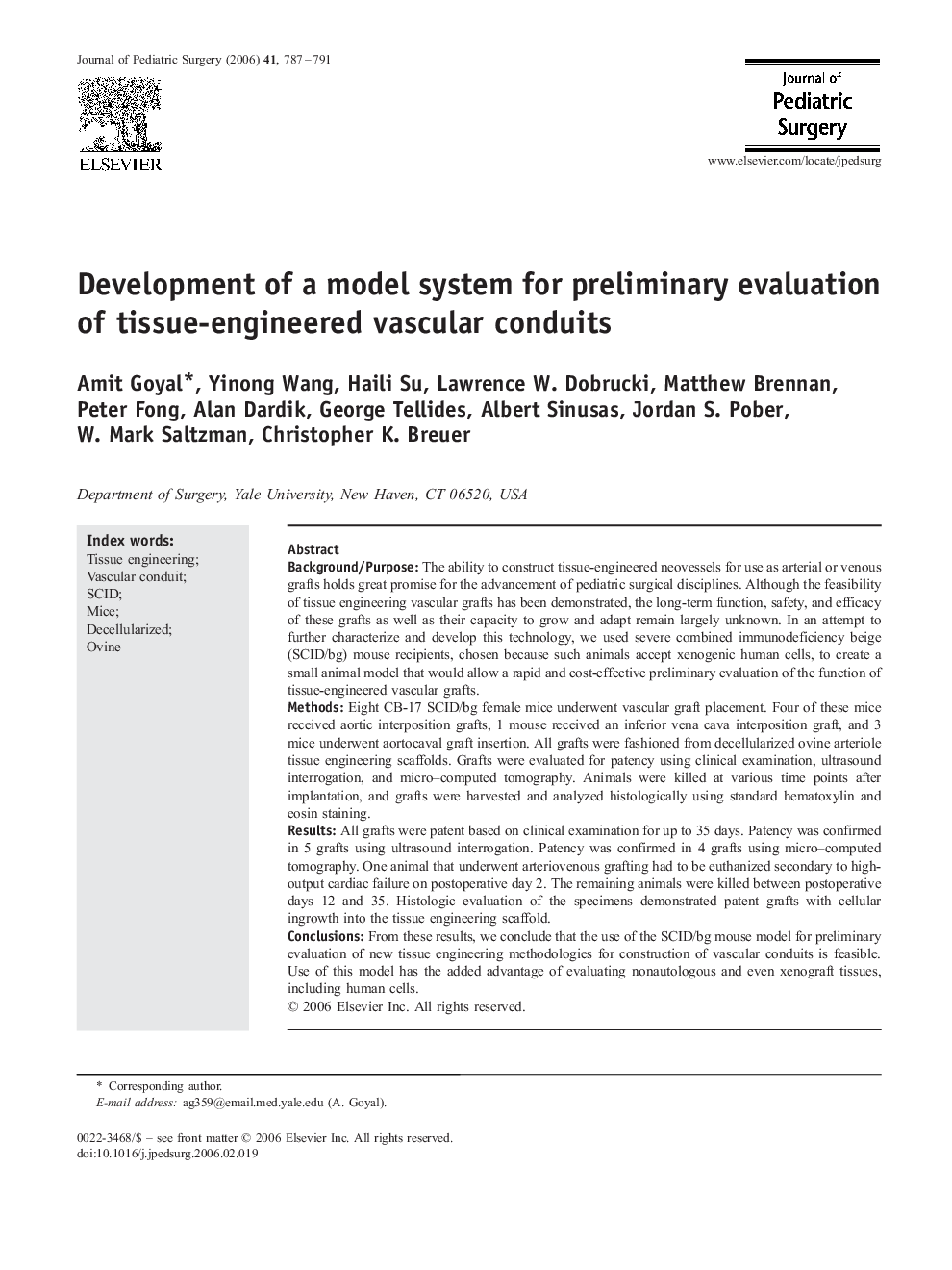| کد مقاله | کد نشریه | سال انتشار | مقاله انگلیسی | نسخه تمام متن |
|---|---|---|---|---|
| 4160614 | 1273848 | 2006 | 5 صفحه PDF | دانلود رایگان |

Background/PurposeThe ability to construct tissue-engineered neovessels for use as arterial or venous grafts holds great promise for the advancement of pediatric surgical disciplines. Although the feasibility of tissue engineering vascular grafts has been demonstrated, the long-term function, safety, and efficacy of these grafts as well as their capacity to grow and adapt remain largely unknown. In an attempt to further characterize and develop this technology, we used severe combined immunodeficiency beige (SCID/bg) mouse recipients, chosen because such animals accept xenogenic human cells, to create a small animal model that would allow a rapid and cost-effective preliminary evaluation of the function of tissue-engineered vascular grafts.MethodsEight CB-17 SCID/bg female mice underwent vascular graft placement. Four of these mice received aortic interposition grafts, 1 mouse received an inferior vena cava interposition graft, and 3 mice underwent aortocaval graft insertion. All grafts were fashioned from decellularized ovine arteriole tissue engineering scaffolds. Grafts were evaluated for patency using clinical examination, ultrasound interrogation, and micro–computed tomography. Animals were killed at various time points after implantation, and grafts were harvested and analyzed histologically using standard hematoxylin and eosin staining.ResultsAll grafts were patent based on clinical examination for up to 35 days. Patency was confirmed in 5 grafts using ultrasound interrogation. Patency was confirmed in 4 grafts using micro–computed tomography. One animal that underwent arteriovenous grafting had to be euthanized secondary to high-output cardiac failure on postoperative day 2. The remaining animals were killed between postoperative days 12 and 35. Histologic evaluation of the specimens demonstrated patent grafts with cellular ingrowth into the tissue engineering scaffold.ConclusionsFrom these results, we conclude that the use of the SCID/bg mouse model for preliminary evaluation of new tissue engineering methodologies for construction of vascular conduits is feasible. Use of this model has the added advantage of evaluating nonautologous and even xenograft tissues, including human cells.
Journal: Journal of Pediatric Surgery - Volume 41, Issue 4, April 2006, Pages 787–791